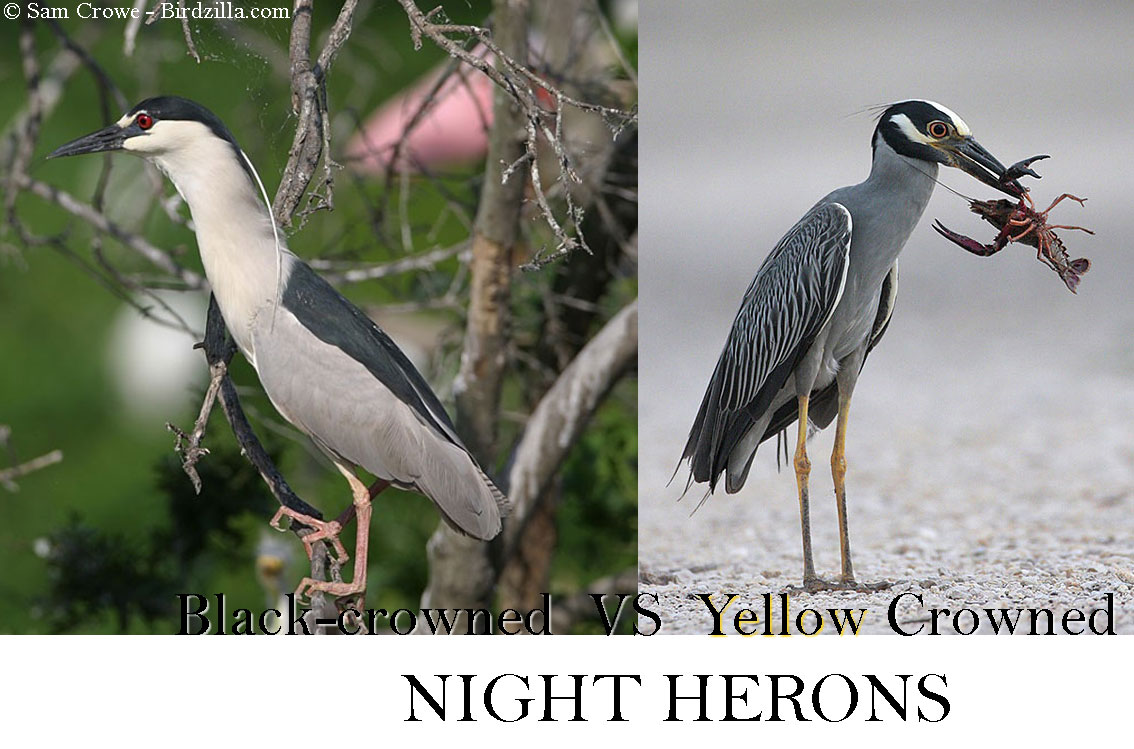
There is a known identification challenge between Black-Crowned and Yellow-Crowned Night-Herons.
They are two species of herons that are relatively similar in appearance and can be difficult to distinguish from each other, especially when seen in low light conditions.
Black-crowned Night-Herons are medium-sized herons with a stocky build, a short neck, and a large head. They have a black cap and back, gray wings and underparts, and distinctive red eyes. Their bill is short and stout, with a dark upper mandible and a yellow lower mandible.
Juvenile Black-crowned Night-Herons are brownish in color and lack the black cap.
Yellow-crowned Night-Herons are similar in size (medium) and shape to Black-crowned Night-Herons but have a distinctive yellowish or buff-colored crown and face, gray wings and back, and a white belly. They have a long, thin bill that is all black and yellow legs.
Juvenile Yellow-crowned Night-Herons are also brownish in color, but have a distinctive white spotting on their wings.
Easy enough? Yes… and NO!
Let’s dive deeper:
Identification difficulties can arise because the plumage coloration of these two species can vary depending on age, sex, and geographic location.
Additionally, the yellowish coloration on the crown of a Yellow-crowned Night-Heron can be difficult to see in certain lighting conditions, and the black cap of a Black-crowned Night-Heron can sometimes appear more dark gray than black.
Therefore, it is important to take into account multiple features, such as bill shape and eye color, in addition to plumage coloration when attempting to identify these two species of herons.
Pictures say more than a thousand words, so let’s see the pics…
On this page
Adults
The Adults of the these two species are a cinch to identify, the juveniles have variable plumage and can offer an identification challenge.
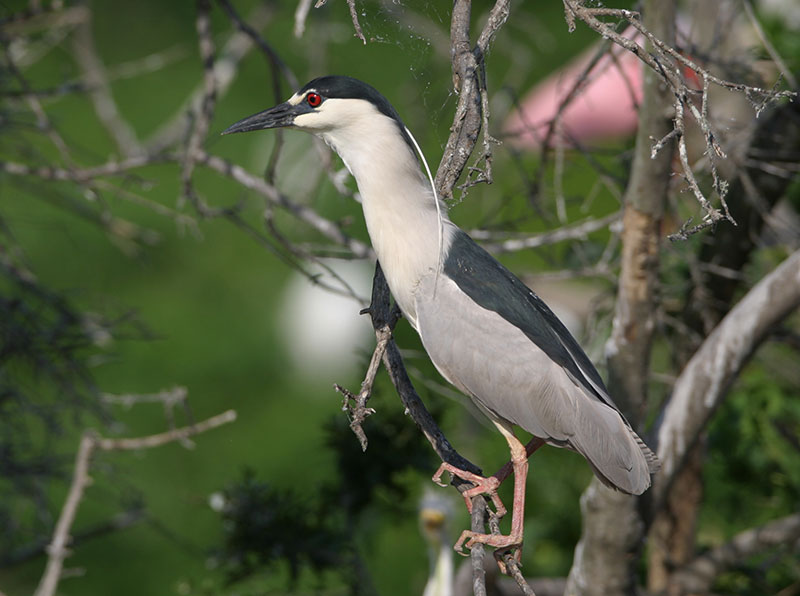
Adult Black-crowned Night-Heron. Photograph © Sam Crowe
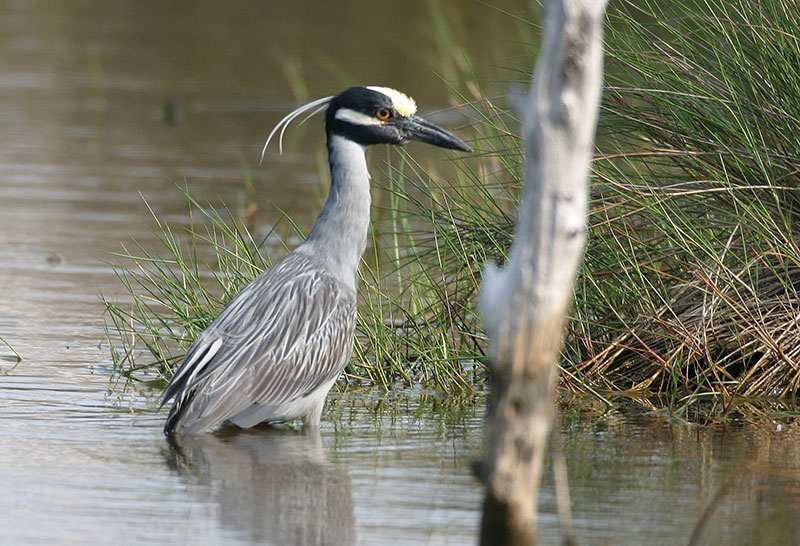
Adult Yellow-crowned Night-Heron. Photograph © Sam Crowe
Juvenile night-herons
Separating juvenile night-herons is a greater challenge.
Compare these two images of the night-herons at rest.
Immature Black-Crowned on the left has a yellow and black bill. The Yellow-crowned on the right has a primarily dark bill.
The Black-crowned has a more “pointy” bill than the Yellow-crowned.
The Black-crowned has more spots on the wing and back than the Yellow-crowned.
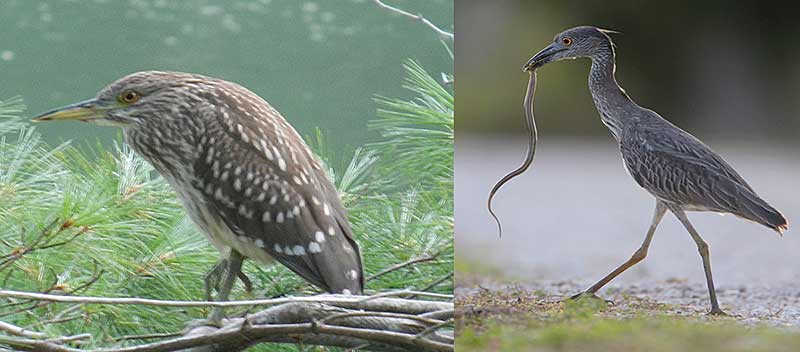
In flight…
Now compare the two species in flight. The feet on the Black-crowned (left) barely extend beyond the tail, while the feet on the Yellow-crowned, extend well beyond the tail. Note the white spots on the Black-crowned on the left are much reduced from the image above, and closer to those of the Yellow-crowned on the right.
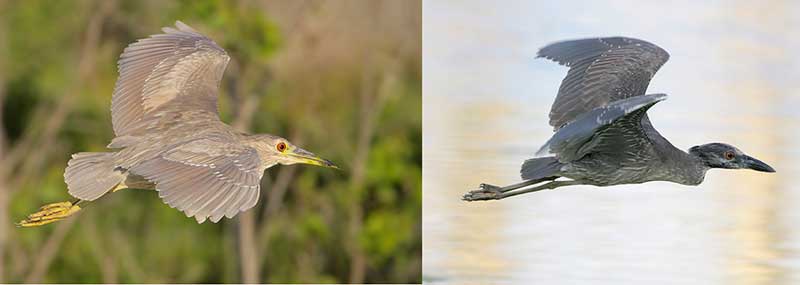
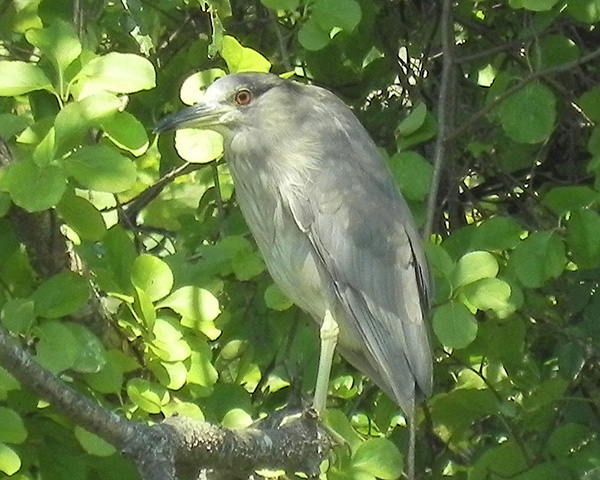
Photograph © Harriet Moore
A very pale Black-crowned Night-Heron.
Identification challenge 1
The image is as large as possible for study.
Which species do you think it is? It has lots of white spots on the wings and back.
The bill looks pale at the base, almost like a Black-crowned? How about the long legs?
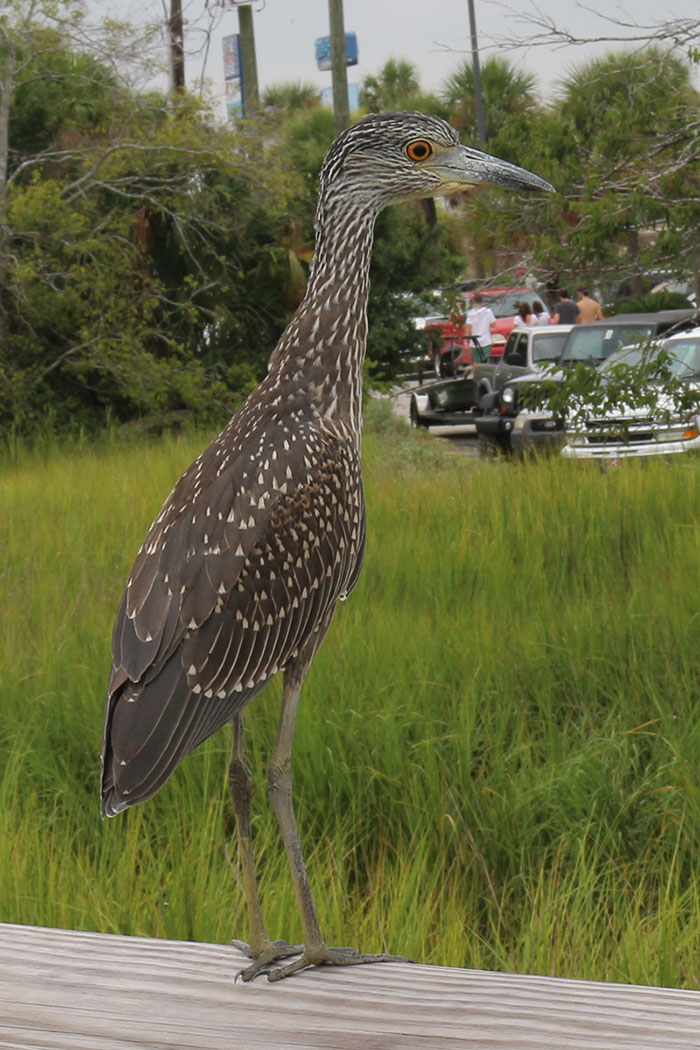
What did you decide?
It often takes a combination of characteristics to make a proper identification.
In this case you might have noticed the shape of the bill and the long legs.
While the bird has plenty of white spots on the wings and back they are generally smaller and shapped differently than those on a Black-crowned.
A pretty good indication this is a Yellow-crowned Night-Heron.

Identification challenge 2
To keep things interesting – here is an image of young Black-crowned with no spots – similar to the pale Black-crowned above, and virtually no tail. Photograph © Greg Lavaty
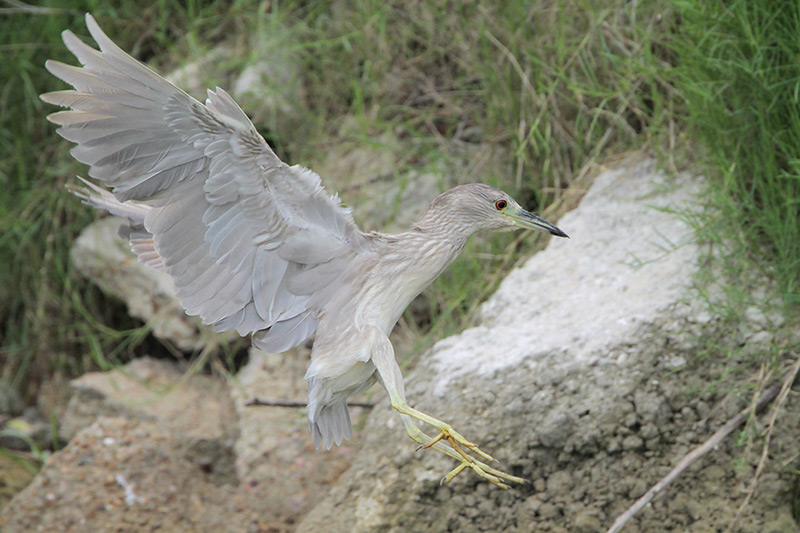
Photograph © Greg Lavaty
Another pale young Black-crowned Night-Heron.
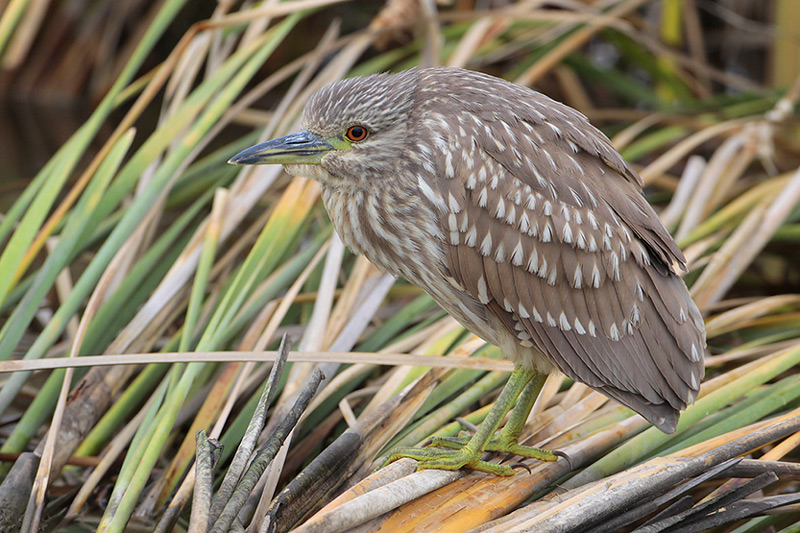
Note the size and shape of the white spots on this Black-crowned, compared to the white spots on the Yellow-crowned.
To Sum It Up
While Black-crowned and Yellow-crowned Night-Herons can be difficult to distinguish from each other, there are several key differences. If you’re not sure, then check
- Plumage Coloration: Black-crowned Night-Herons have a black cap and gray face. Yellow-crowned Night-Herons have a yellow or buff-colored crown and face. In poor light conditions, it might be hard to spot the differences
- Bill shape and color: Black-crowned Night-Herons have a short, thick bill with a black upper mandible and a yellow lower mandible. Yellow-crowned Night-Herons have a longer, thinner all-black bill. In average conditions, it should be enought to spot the difference.
- Eye color: Black-crowned Night-Herons have distinctive red eyes, while Yellow-crowned Night-Herons have less dark eyes. So, keep YOUR eye on THEIR eye!
- Habitat preferences: Black-crowned Night-Herons are often found in freshwater wetlands and other bodies of water. Yellow-crowned Night-Herons prefer brackish and saltwater habitats.
Read also: Regularly Occurring Night-Herons of the United States

